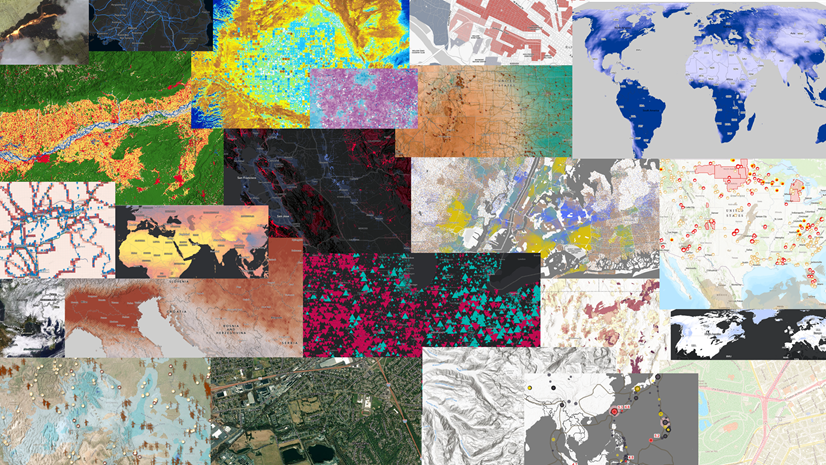We commonly get asked by water, wastewater and stormwater utilities for some tips on how to establish a system for unique asset IDs, so we thought it would helpful to share some insight on this topic. It seems like almost all utilities now recognize the need to have a standard methodology for establishing unique IDs for all of their assets and often use GIS implementation or data model upgrades as an opportunity to introduce a new system for assigning unique asset IDs.
First, and most importantly, it is an absolute must to use unique asset IDs!! In our modern era of computers, databases and GIS, unique assets IDs play a critical role in reducing duplicate or confusing information about your assets and also is the first step to being able to reduce silos of data and integrating your systems.
That being said, it seems like some water, wastewater and stormwater utilities make the process of coming up with a unique asset IDs a more complex endeavor than launching the space shuttle. It doesn’t have to be that difficult, because inherently GIS has the ability to use any unique number or letter combination to store, manage and retrieve information about your assets. Things become complicated when we try and bring back the human element into our asset ID naming system. That is, you try and create asset IDs that have information in them that allows humans to understand what the asset is or where it is located. An example of this would be using an asset naming methodology that produced names like H-MT601 – where H is for hydrant, MT is for the service area in this case Millbrook Township, and 601 is the number of the hydrant.
But if you are using a GIS, you are already accessing asset information by location and can eliminate location information from your asset IDs. We hear 2 common rationales for having a location code in asset IDs. The first is that field crews need a location code to help them know what service area assets are located in or know what map book sheet they will find an asset. A good mobile GIS application eliminates this need.
The second rational we hear is location codes in asset IDs are necessary for reporting. For example we commonly hear water utilities say they need municipal codes in their hydrant IDs to run reports for fire billing. This problem is also solved by GIS because you run fire billing reports, or any asset reporting for that matter, but municipal boundaries or other polygon layers in the GIS.
Asset ID Methodologies
So here are some methodologies that we’ve seen utilities use for their asset IDs:
Incrementing Asset IDs – incrementing asset IDs by one number whenever a new asset is put in service. This is by far the simplest way to assign asset IDs, provided that one person or system is assigning all of the asset IDs. The Dynamic Value Table in the Water Editing Toolbar that is part of the Water Editing Template is simple way to have ArcGIS increment your asset IDs.
Asset ID preceded by asset type – For example putting an identifier in front of asset ID to identify the type of asset. For example MH preceding manhole IDs or FH preceding fire hydrant IDs, M preceding meters numbers, etc. This is fairly common and is useful to help identify which asset ID corresponds to which asset when labeled on a map.
Asset IDs with geographic identifier – discussed above, in a well done GIS implementation, there is typically no business value in this practice.
Asset IDs with a system identifier – This is mainly seen in wastewater systems where it is important to identify and differentiate interceptor lines, typically for reporting purposes. For example, a utility with 3 different interceptors lines – Bushy Creek, Forest Run & Oak Valley might put BC, FR & OV in front of any of the assets that in those drainage basins. Arguable you could also use a polygon to establish what assets are in each interceptor or sewershed for reporting purposes.
Increatementing Manhole IDs from the lowpoint up – Some wastewater utilities choose to increment their manholes IDs from the lowest manhole to the highest manhole along interceptor or trunk sewer lines. This tends to work well in areas where trunk mains or interceptors aren’t going to be extended in the future and the utility is aware of all of the manhole locations before establishing asset IDs. If new manholes are found (such as buried manholes) or manholes added along the interceptor than typically that manhole is given the next downstream manhole ID with a letter designation. So a buried manhole found above MH27 is given the asset ID MH27A. Once all of the manhole IDs have been assigned from the bottom to the top of the interceptor than many wastewater utilities just increment the manholes on each of the collector lines that feed into the interceptor moving from the bottom to the top of the collector systems.
Here is a good website from the EPA on manhole numbering: http://www.epa.gov/NE/sso/manhole-id.html
Sanitary Sewer Pipe IDs – Often done with a combination of downstream manhole, a dash, and then upstream manhole. So sanitary sewer pipe ID 26-27 takes flow from manhole 27 and carries it to manhole 26.
Geopins – Not often seen in utilities for asset IDs, a geopin is calculated using the X & Y coordinates of a spatial feature. Geopins are commonly seen in land records. Geopins are not a good choice for spatial features that are assigned new loction, such as when a utility improves the spatial accuracy of their asset base by doing something like sub-foot GPS field data collection.
This is an example how geopin would work for a valve at coordinates: X = 23658974.365 Y = 6584752584.968
Geopin Formula = X2 Y2 X3 Y3 – X4 Y4 – X5 Y5 X6 Y6
GeoPIN = 3568-54-8795
Asset ID Tips
Don’t use internal database IDs or geodatabase IDs for your asset IDs – This is a cardinal rule! Never use any internal IDs from a geodatabase or any other database for your unique IDs unless you are 100% certain that it will not be automatically recalculated by the application in the future. An example of this is the OBJECTID attribute in a geodatabase. Because the OBJECTID attribute is internally used by the geodatabase, on occasion in may be recalculated by ArcMap.
Keep your legacy asset IDs – It’s perfectly acceptable to store your “legacy” asset IDs when you switch to a new asset ID system. It may be very helpful to know legacy asset IDs if someone needs to refer back to as-builts or old field map books. We saw a great example of this with a municipality that created a table with a one to many relationship between new asset IDs and legacy asset IDs that were used on any old plans or maps that showed the assets.
Make sure only 1 application or person assign new asset IDs – This is critically important. Only 1 application, such as ArcMap, your CMMS or 1 employee is who assigns unique IDs, otherwise you are running the risk of assigning duplicate IDs.
Storm Water IDs – because of the ad-hoc nature of how most water storm networks were built, especially in suburbia and the difficulty in understanding how the water flows without good elevation data, it’s difficult to create an asset ID system for stormwater that describes which assets flow into each other. It’s much easier to just use incrementing IDs.
If you’d like to share other asset ID systems you’ve seen, please feel free to post a comment on this blog.


Commenting is not enabled for this article.